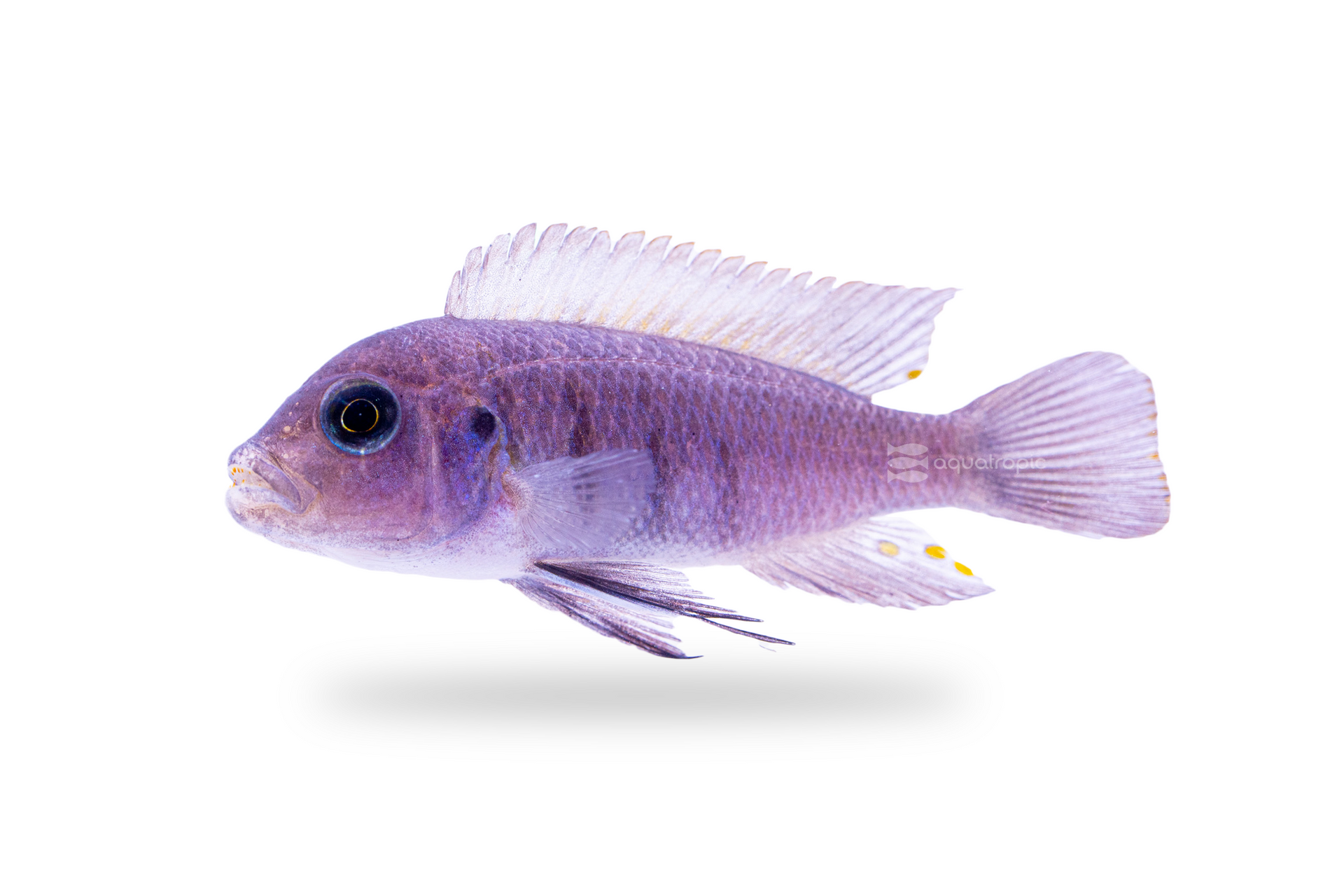What Exactly is a Hara Anyway?

Hara Cichlids are one of the hobby's “newer” Lake Malawi cichlid offerings; they have been called a few different common names since first being imported from Africa: White Top, Gallireya, Blue Reef, etc. They originally come from a very specific reef (Gallireya) in said lake where they are planktivores, like the rest of the fish in their genus (Cynotilapia). As such, they are also sometimes called Gallireya Cichlids, even though now the vast majority of them are aquacultured. They belong to a larger group of cichlids called Mbuna, and while they share many traits with the bulk of that group, they have some distinct differences as well.
The larger group of Mbuna Cichlids are mouthbrooders known for their beautiful colors, intense activity levels and territorial nature. Hara Cichlids certainly fit the bill in the color department. Males, females and even juveniles are strikingly neon blue, with males developing the most distinctive barring and elongated fins. The female coloration is a nice bonus as most cichlids in this wider grouping have somewhat dull females. Haras hit on the activity level too, being super active, especially when kept in groups / harems. One significant difference between the Hara Cichlids and most of the rest of the Mbuna cichlids is their somewhat more docile nature. Hara's should usually not be kept with very aggressive cichlids as they will get bullied. They can be kept as a species only tank with harem distributions, or also with slightly less aggressive cichlid and other assertive community species.
In the aquarium Hara Cichlids are very straightforward to keep and anyone familiar with Lake Malawi cichlids will be familiar with the parameters needed. Displays should be kept in the mid to upper 70s, with a pH that is somewhat alkaline, 7.5 to 8.5 or so. Hard water and very limited nitrogen levels will give you the most brilliantly colored fish. New hobbyists are frequently steered away from Mbuna cichlids because of the territorial aspect of housing them. Hara Cichlids are a great way for newer hobbyists to enjoy the dazzling coloration and activity of Mbunas without the aggression challenges.
Hara Cichlids are also pretty easy to breed in captivity, and this will happen on its own without intervention. Males will invite females into their territory for spawning and females will hold the fry in their mouths (mouthbrooding) for around 20 days before releasing them. The numbers of fry are relatively small, but they are easily fed with baby brine and powdered processed foods. If you want to successfully rear the fry with any regularity, they should be removed from the larger display or they will likely be eaten.
If you love cichlids, and are looking for something a little different than usual, Hara Cichlids need to be on your list. They are nearly ideal as an aquarium pet; they stay small, with males never quite reaching four inches long and females staying a good half inch shorter than that. They are hardy, gorgeous, active, and (for cichids) relatively peaceful. How much more could you want!? Ask your LFS about aquacultured Hara Cichlids from Aquatropic today!